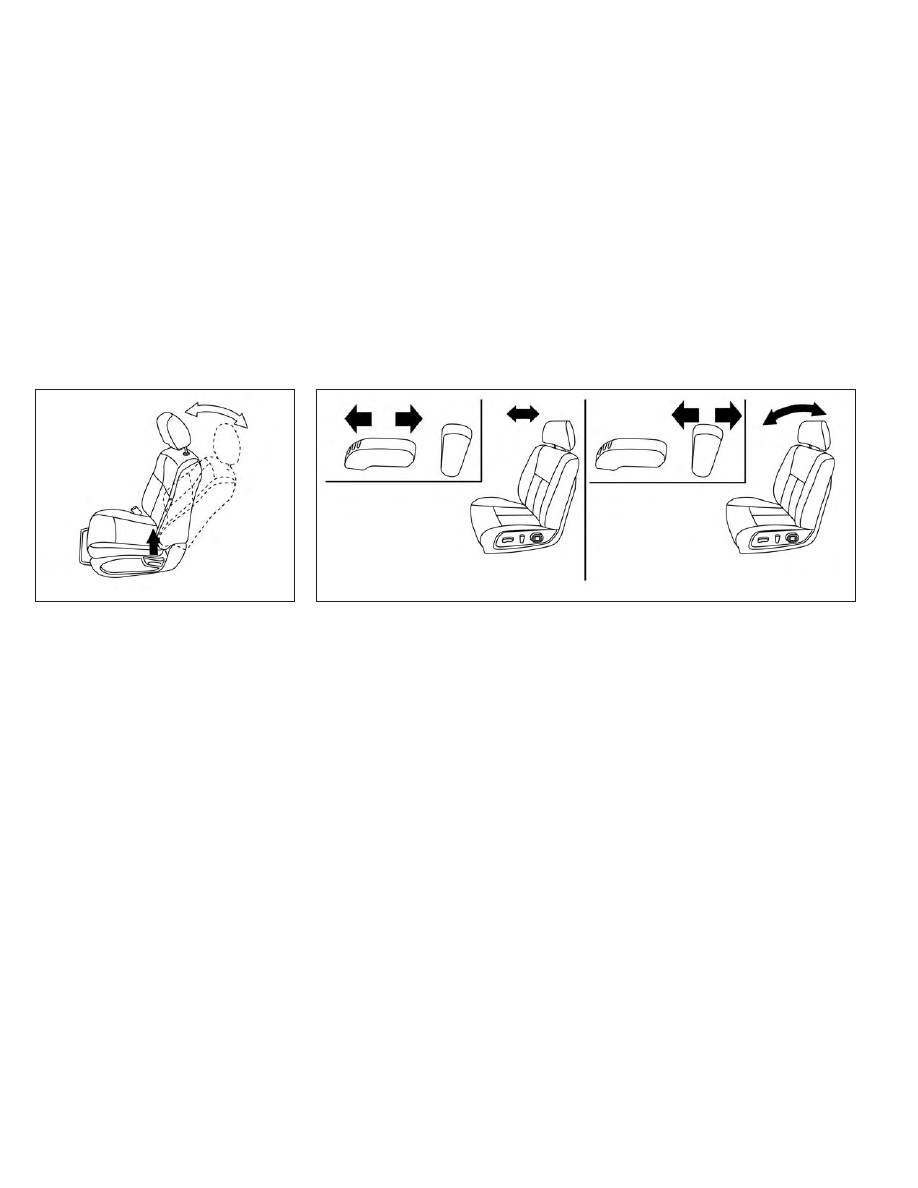Nissan Titan (2023 year). Manual in english - page 2

Reclining
To recline the seatback, pull the lever up
and lean back. To bring the seatback for-
ward, pull the lever up and lean your body
forward. Release the lever to lock the seat-
back in position.
The reclining feature allows adjustment of
the seatback for occupants of different
sizes for added comfort and to help obtain
proper seat belt fit. For additional informa-
tion, see “Precautions on seat belt usage”
(P. 1-15). Also, the seatback can be reclined
to allow occupants to rest when the vehicle
is stopped and the shift lever is in the P
(Park) position.
FRONT POWER CAPTAIN’S CHAIR
SEAT ADJUSTMENT (if so
equipped)
Operating tips
• The power seat motor has an auto-reset
overload protection circuit. If the motor
stops during operation, wait 30 seconds
then reactivate the switch.
• Do not operate the power seat switch for
a long period of time when the engine is
off. This will discharge the battery.
For additional information, see “Memory
seat(s)” (P. 3-41).
Forward and backward
Moving the switch as shown will slide the
seat forward or backward to the desired
position.
LRS2560
LRS2743
Safety-Seats, seat belts and supplemental restraint system
1-5